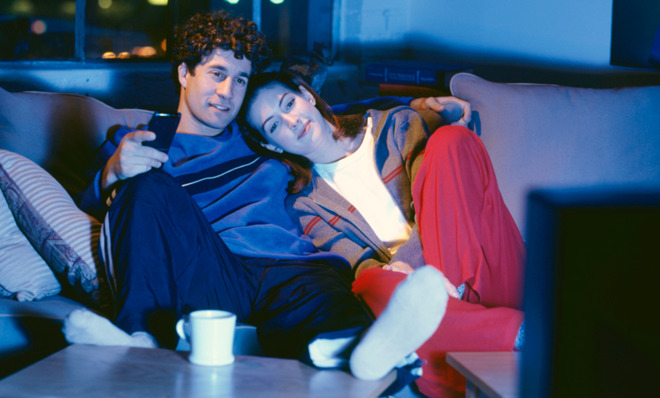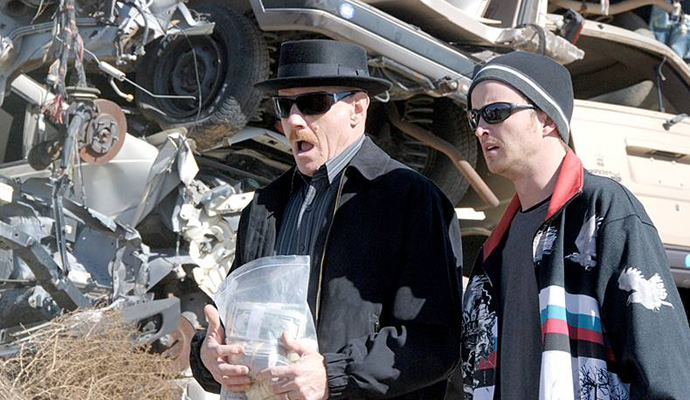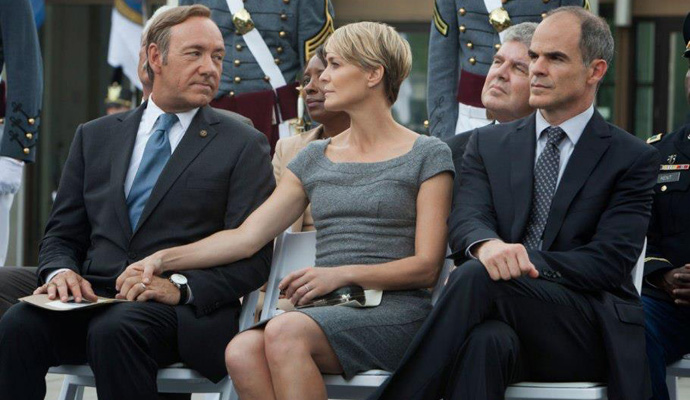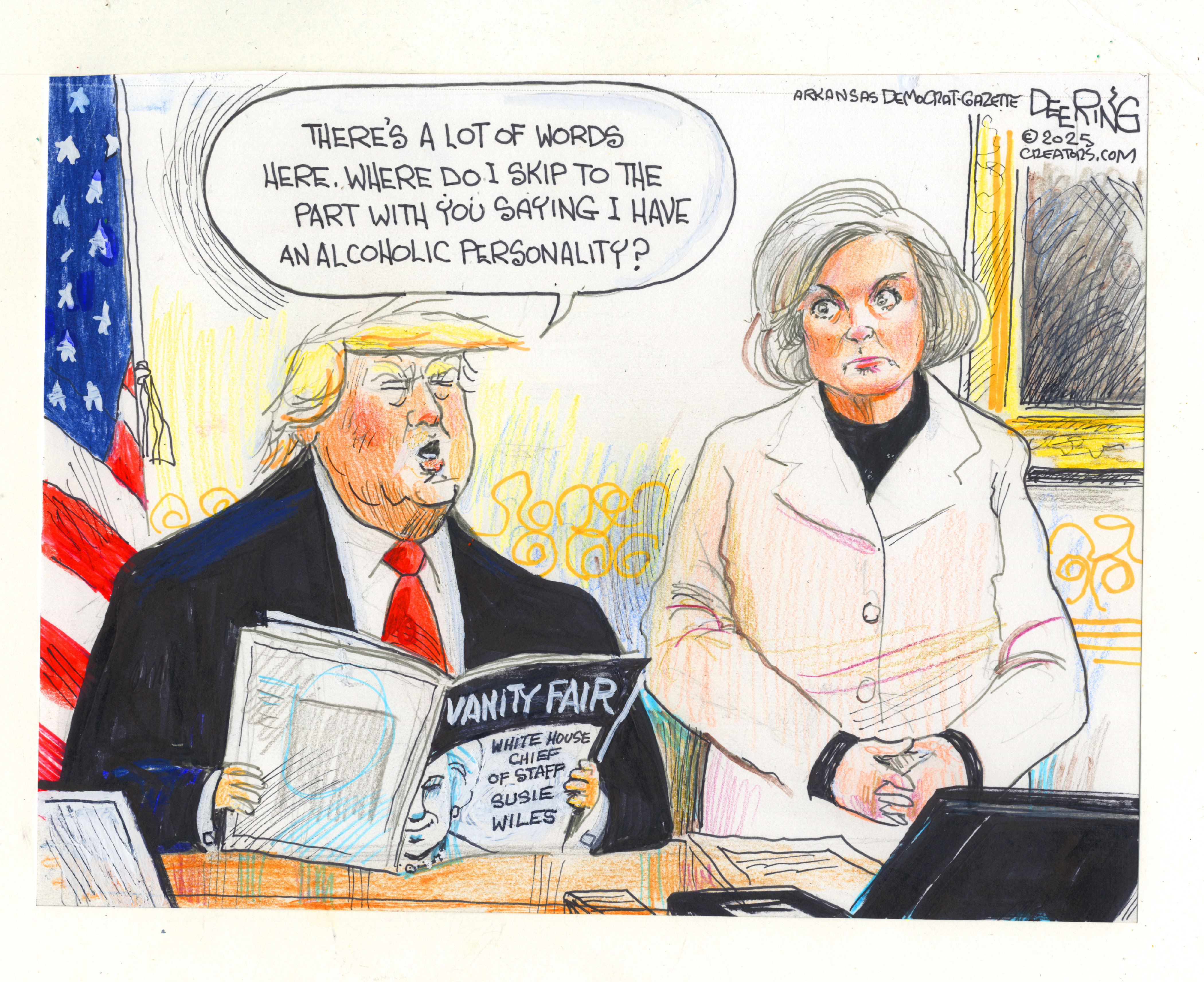The science behind our insatiable need to binge-watch TV
It turns out we're wired to watch episode after episode after episode


Never before have we been such compulsive multitaskers, blogging and tweeting using multiple devices and smartphones anywhere and everywhere, from trains to cafes. It seems a little backwards, then, that one of our top post-workday hobbies is enjoying the complex storylines of TV series such as Game of Thrones, Breaking Bad, and House of Cards, which engross us for hours on end.
A new type of consumer has evolved in recent years — the love child of the Couch Potato and the Channel Surfer — who has been raised on streaming devices and nurtured by entire seasons of shows available at the click of a remote.
For just a small payment each month, subscribers to Netflix, Hulu Plus, and Amazon Instant Video have access to thousands of streamed movies and TV shows that are updated and added to regularly. And with Netflix's new post-play feature, which prompts viewers to play the next episode just as the credits of the last one begin rolling, it's easier than ever to succumb to the captivating lure of Breaking Bad cooks Walter White and Jesse Pinkman, whose signature dish of crystal meth notched up 10.3 million viewers in one concluding episode.
The Week
Escape your echo chamber. Get the facts behind the news, plus analysis from multiple perspectives.

Sign up for The Week's Free Newsletters
From our morning news briefing to a weekly Good News Newsletter, get the best of The Week delivered directly to your inbox.
From our morning news briefing to a weekly Good News Newsletter, get the best of The Week delivered directly to your inbox.
The birth of the "binge-watcher" has been an intriguing, unexpected development of the past five years.
High on empathy

British psychologist Edward B Titchener, active at the turn of the 20th century, might argue that we become glued to complex, emotionally-charged stories because of our ability to recognize the feelings of others. A newly identified phenomenon at the time, Titchener coined the term "empathy" in 1909. In addition to identifying others' discomfort or elation, this branch of "cognitive empathy" examines how humans can also adopt others' psychological perspectives, including those of fictional characters. Psychological tests (through the use of puppets, pictures, and videos) have even been developed to study empathy in preschool-aged children.
Neuro-economist Paul Zak of Claremont Graduate University in California set out to examine the science of empathy in storytelling. He showed participants a video about a young boy with terminal cancer, who is carefree and completely unaware of his fate. We get the father's perspective, too — although he tries to enjoy his final months with his son, he finds it impossible to be happy.
A free daily email with the biggest news stories of the day – and the best features from TheWeek.com
Zak found that subjects commonly elicited two emotions after viewing the video: distress and empathy. When a blood sample was taken from participants before and after viewing, both cortisol (a stress hormone) and oxytocin (a hormone associated with human connection and caring) levels were higher after the video. While cortisol was correlated with ratings of distress, there was a strong relationship between oxytocin and empathetic feelings.
After watching the video, participants were also given the opportunity to donate money to a stranger in the laboratory, as well as a charity that helps sick children. In both cases, the amount of cortisol and oxytocin released predicted how much people were willing to share. Zak concluded that these empathetic feelings (that we also, apparently, act on) are evidence of our compulsions as social beings — even when faced with a fictional story.
So it's clear that humans connect emotionally with stories of their kin. But what explains the binge? Or why, according to Netflix, did three out of four members who streamed the first season of Breaking Bad finish all seven episodes in one session?
TV and film meet the brain

Psychologist Uri Hasson of Princeton University pioneered the new field of "neurocinematics", or the study of how TV and film interact with the brain. In a 2008 study, Hasson and colleagues showed participants four clips while they had their brain imaged via fMRI (an imaging technique that measures changes to bloodflow in the brain): Larry David's Curb Your Enthusiasm, Sergio Leone's The Good, the Bad and the Ugly, Alfred Hitchchock's Bang! You're Dead, and a 10-minute unedited, one-shot video of a Sunday morning concert in NYC's Washington Square Park.
Hasson wanted to determine the inter-subject correlation (ISC) across all viewers' brains to examine how similarly they'd respond while watching these four very different clips. The Washington Square Park video evoked a similar response in all viewers in only 5 percent of the cortex, while Curb Your Enthusiasm and The Good, The Bad and the Ugly came in at 18 percent and 45 percent, respectively. The Hitchcock film, however, elicited an ISC of 65 percent.
In other words, compared to the other films, Bang! You're Dead was able to co-ordinate the responses of many different brain regions, resulting in simultaneous "on" and "off" responses across all participants 65 percent of the time. Hasson concluded that the more "controlling" the clip — those that showed the viewer exactly what they're supposed to pay attention to — the more focused the audience.
While the one-shot park clip allowed viewers to direct their attention to anything they found interesting, Hitchcock proved the master of orchestration: what you're watching, what you're thinking, how you're feeling, and what you predict will come next. In the same way, modern-day TV writers and directors can engage viewers worldwide with the flash-forwards of LOST or the gruesome action scenes of Game of Thrones.
Based on a survey commissioned by Netflix in December, 61 percent of 1,500 online respondents claimed to binge-watch Netflix regularly (defined, modestly, as watching at least two or three episodes successively every few weeks). Three-quarters reported having positive feelings in doing this.
The company then sent cultural anthropologist Grant McCracken into the homes of TV streamers to find out why. McCracken reported that 76 percent said binging was a welcome refuge from their busy lives, and nearly eight in 10 people said binge-watching a TV show made it more enjoyable than watching single episodes. So despite our hectic, digitally driven lifestyles and 140-character social interactions, McCracken concludes that we're actually craving the long narratives that today's good television can provide. Instead of dealing with the day's stresses by zoning out, we'd rather become engrossed in an entirely different (and fictional) world.
A new report also claims that the average American watches more than five hours of television daily. This statistic comes at the same time that it was revealed how all this sitting is slowly killing us, and that sedentary time in older age puts one at a significant risk for disability.
With all this binge-watching, then, it is perhaps a good idea to do as House of Cards' Claire Underwood did for her husband Frank and set up a nifty little rowing machine in front of the screen. This could counter the negative effects of binge-sitting and binge-eating (pizza delivery, anyone?). For the same reasons we're wired to binge-watch TV, our brains also crave a good workout session — marrying the two might prove the less killer combination.
More from The Conversation
-
 A Christmas Carol (or two)
A Christmas Carol (or two)The Week Recommends These are the most delightful retellings of the Dickens classic from around the country
-
 Political cartoons for December 18
Political cartoons for December 18Cartoons Thursday’s political cartoons include Susie Wiles under scrutiny, Venezuela's oil, and more
-
 Bengal Tiger at the Baghdad Zoo: ‘funny, profound, must-see theatre’
Bengal Tiger at the Baghdad Zoo: ‘funny, profound, must-see theatre’The Week Recommends Rajiv Joseph’s ‘engrossing’ tragi-comedy about the absurdities of war